Do you have a question about the Roland VXpanded VS-880 and is the answer not in the manual?
Identifies this document as the owner's manual for the VS-880.
Provides critical safety information for operating the unit.
Details essential grounding procedures to prevent electrical hazards.
Lists warnings and precautions for safe operation and to prevent damage.
Lists all items included in the VS-880 V-XPANDED and VS-880-S1 packages.
Outlines the structure and chapters of the owner's manual for user guidance.
Explains new features with examples, covering mixer, recorder, and effect operations.
Defines key terms and explains the VS-880's internal structure and basic operations.
Guides users through basic operations from recording to creating a master tape.
Details techniques for editing recorded sound, including copy, move, erase, and time adjustments.
Explains how the VS-880 handles MIDI messages for synchronization and control.
Covers procedures for using Zip drives for recording, saving, and loading song data.
Provides instructions for backing up and recovering song data using a DAT recorder.
Explains how to use the VS8F-1 effects board for reverb, vocoder, and other sound processing.
Details functions like metronome, foot switch control, undo/redo, and disk space management.
Guides on adjusting display settings, checking song size, and restoring system defaults.
Presents practical examples and advanced techniques for using the VS-880's features.
Contains supplementary information including troubleshooting, parameters, and glossary.
Describes the VS-880's multi-track recording, editing, and digital mixing features.
Explains the easy-to-operate controls and the full range of input/output connectors.
Details available options like hard disk drives and effect expansion boards.
Provides essential guidance on power supply, unit placement, and cleaning.
Offers crucial advice for handling disk drives to prevent damage and ensure proper operation.
Clarifies legal aspects regarding copyright and Roland's disclaimer of liability.
Lists further precautions related to memory, controls, cables, and transport.
Details the functions of the mixer section's buttons, knobs, and faders.
Explains the buttons and controls for the VS-880's recording functions.
Describes the indicators and information presented on the VS-880's display screen.
Identifies all input, output, and interface connectors on the rear panel.
Explains auto mix, mixer modes, and how to record mixer settings.
Covers mastering mode, digital input handling, and creating protected master tapes.
Introduces new preset patches, algorithms like Reverb 2, and their parameters.
Details disk reliability checks and synchronization methods using sync tracks.
Explains using MIDI program and control change messages for scenes and effects.
Covers numeric key input, shift lock, and easy time adjustment features.
Defines essential terms like sources, tracks, channels, and explains signal flow through busses.
Explains how songs are stored, including partitions and song data contents.
Details mixer modes (Input->Track, Input Mix, Track Mix) and scene management.
Explains differences from tape MTRs, track capabilities, and V-tracks.
Covers the VS8F-1 expansion board and the VS-880's operational conditions.
Guides users through turning on the unit and handling disk initialization.
Explains creating new songs, naming, multitrack recording, and V-track switching.
Details how to record additional tracks and re-record specific sections.
Covers techniques for repeating sections and combining tracks via track bouncing.
Guides users through adjusting tone and creating a stereo master tape via mixdown.
Explains mixdown procedures for cassette/DAT and digital recording setup.
Covers saving songs, protecting them from erasure, and selecting songs.
Details the correct shutdown procedure and how to restart the VS-880.
Explains previewing, scrubbing, and the fundamental steps for track editing.
Details how to copy, move, erase, and exchange performance data between tracks.
Covers inserting blank space and deleting portions of a performance.
Explains how to adjust the playback time and pitch of recorded data.
Introduces MIDI concepts, connectors, channels, and message types.
Explains synchronizing the VS-880 with sequencers via MTC, tempo maps, and sync tracks.
Details how to create and use tempo maps and sync tracks for synchronization.
Covers connecting SCSI devices and initializing new or external disk drives.
Explains backing up songs to Zip disks (Archive, Playable) and loading data.
Addresses problems encountered during data saving and provides troubleshooting steps.
Guides users on backing up songs to DAT recorders and recovering data.
Explains how to check the condition of recorded DAT backup tapes.
Demonstrates applying reverb during playback/recording and using vocoder effects.
Shows how to apply effects when merging tracks, specifically reverb for bouncing.
Provides tips for resolving issues when effects do not sound as expected.
Covers metronome setup, sound sources, and MIDI synchronization.
Explains using foot switches for playback/stop and automatic stopping at mark points.
Details the Vari-pitch function for pitch control and the Solo function for monitoring.
Covers undoing operations, managing disk space via Song Optimize, and erasing songs.
Guides on adjusting display contrast and switching the bar display contents.
Explains displaying measures/beats and checking recorded performance size.
Covers restoring initial mixer settings and configuring behavior without an internal hard disk.
Shows how to record multiple inputs to one track and assemble sections using V-tracks.
Details copying MTR performances and controlling the mixer via MIDI (Compu-mix).
Explains synchronizing VS-880 units and operating from MMC-compatible devices.
Provides examples of applying effects during playback and track bouncing.
Explains connecting, terminating, and using SCSI devices like disk drives.
Lists potential problems with sound, recording, synchronization, and disk drives.
Details system error messages and a list of special key combinations for advanced functions.
Provides comprehensive lists of parameters and mixer section block diagrams.
Defines technical terms and lists the VS-880's technical specifications.
Includes a track sheet template and information about the V-XPANDED sticker.
Identifies this document as the owner's manual for the VS-880.
Provides critical safety information for operating the unit.
Details essential grounding procedures to prevent electrical hazards.
Lists warnings and precautions for safe operation and to prevent damage.
Lists all items included in the VS-880 V-XPANDED and VS-880-S1 packages.
Outlines the structure and chapters of the owner's manual for user guidance.
Explains new features with examples, covering mixer, recorder, and effect operations.
Defines key terms and explains the VS-880's internal structure and basic operations.
Guides users through basic operations from recording to creating a master tape.
Details techniques for editing recorded sound, including copy, move, erase, and time adjustments.
Explains how the VS-880 handles MIDI messages for synchronization and control.
Covers procedures for using Zip drives for recording, saving, and loading song data.
Provides instructions for backing up and recovering song data using a DAT recorder.
Explains how to use the VS8F-1 effects board for reverb, vocoder, and other sound processing.
Details functions like metronome, foot switch control, undo/redo, and disk space management.
Guides on adjusting display settings, checking song size, and restoring system defaults.
Presents practical examples and advanced techniques for using the VS-880's features.
Contains supplementary information including troubleshooting, parameters, and glossary.
Describes the VS-880's multi-track recording, editing, and digital mixing features.
Explains the easy-to-operate controls and the full range of input/output connectors.
Details available options like hard disk drives and effect expansion boards.
Provides essential guidance on power supply, unit placement, and cleaning.
Offers crucial advice for handling disk drives to prevent damage and ensure proper operation.
Clarifies legal aspects regarding copyright and Roland's disclaimer of liability.
Lists further precautions related to memory, controls, cables, and transport.
Details the functions of the mixer section's buttons, knobs, and faders.
Explains the buttons and controls for the VS-880's recording functions.
Describes the indicators and information presented on the VS-880's display screen.
Identifies all input, output, and interface connectors on the rear panel.
Explains auto mix, mixer modes, and how to record mixer settings.
Covers mastering mode, digital input handling, and creating protected master tapes.
Introduces new preset patches, algorithms like Reverb 2, and their parameters.
Details disk reliability checks and synchronization methods using sync tracks.
Explains using MIDI program and control change messages for scenes and effects.
Covers numeric key input, shift lock, and easy time adjustment features.
Defines essential terms like sources, tracks, channels, and explains signal flow through busses.
Explains how songs are stored, including partitions and song data contents.
Details mixer modes (Input->Track, Input Mix, Track Mix) and scene management.
Explains differences from tape MTRs, track capabilities, and V-tracks.
Covers the VS8F-1 expansion board and the VS-880's operational conditions.
Guides users through turning on the unit and handling disk initialization.
Explains creating new songs, naming, multitrack recording, and V-track switching.
Details how to record additional tracks and re-record specific sections.
Covers techniques for repeating sections and combining tracks via track bouncing.
Guides users through adjusting tone and creating a stereo master tape via mixdown.
Explains mixdown procedures for cassette/DAT and digital recording setup.
Covers saving songs, protecting them from erasure, and selecting songs.
Details the correct shutdown procedure and how to restart the VS-880.
Explains previewing, scrubbing, and the fundamental steps for track editing.
Details how to copy, move, erase, and exchange performance data between tracks.
Covers inserting blank space and deleting portions of a performance.
Explains how to adjust the playback time and pitch of recorded data.
Introduces MIDI concepts, connectors, channels, and message types.
Explains synchronizing the VS-880 with sequencers via MTC, tempo maps, and sync tracks.
Details how to create and use tempo maps and sync tracks for synchronization.
Covers connecting SCSI devices and initializing new or external disk drives.
Explains backing up songs to Zip disks (Archive, Playable) and loading data.
Addresses problems encountered during data saving and provides troubleshooting steps.
Guides users on backing up songs to DAT recorders and recovering data.
Explains how to check the condition of recorded DAT backup tapes.
Demonstrates applying reverb during playback/recording and using vocoder effects.
Shows how to apply effects when merging tracks, specifically reverb for bouncing.
Provides tips for resolving issues when effects do not sound as expected.
Covers metronome setup, sound sources, and MIDI synchronization.
Explains using foot switches for playback/stop and automatic stopping at mark points.
Details the Vari-pitch function for pitch control and the Solo function for monitoring.
Covers undoing operations, managing disk space via Song Optimize, and erasing songs.
Guides on adjusting display contrast and switching the bar display contents.
Explains displaying measures/beats and checking recorded performance size.
Covers restoring initial mixer settings and configuring behavior without an internal hard disk.
Shows how to record multiple inputs to one track and assemble sections using V-tracks.
Details copying MTR performances and controlling the mixer via MIDI (Compu-mix).
Explains synchronizing VS-880 units and operating from MMC-compatible devices.
Provides examples of applying effects during playback and track bouncing.
Explains connecting, terminating, and using SCSI devices like disk drives.
Lists potential problems with sound, recording, synchronization, and disk drives.
Details system error messages and a list of special key combinations for advanced functions.
Provides comprehensive lists of parameters and mixer section block diagrams.
Defines technical terms and lists the VS-880's technical specifications.
Includes a track sheet template and information about the V-XPANDED sticker.
| Sampling Rate | 44.1 kHz |
|---|---|
| D/A Conversion | 20-bit |
| MIDI | In, Out, Thru |
| Type | Digital Audio Workstation |
| A/D Conversion | 20-bit |
| Frequency Response | 20 Hz - 20 kHz (±1 dB at 44.1 kHz sampling rate) |
| Hard Drive | Internal |
| Optional Accessories | VS8F-2 Expansion Board |
| Effects | Built-in |
| SCSI | Yes (for external storage) |
| Tracks | 8 tracks (expandable to 16 with VS8F-2 Expansion Board) |
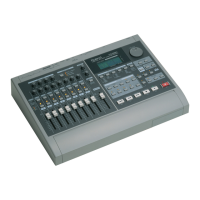


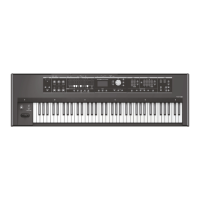

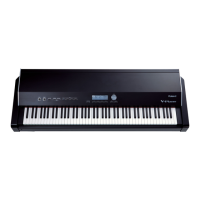

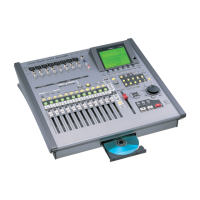
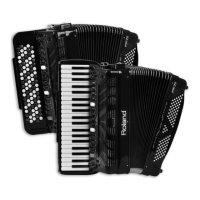
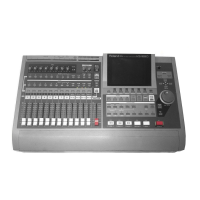
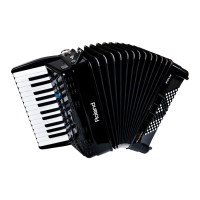
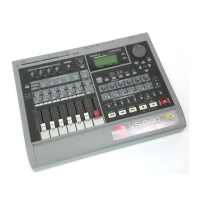
